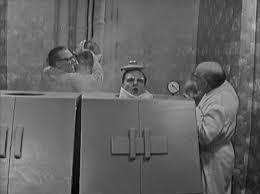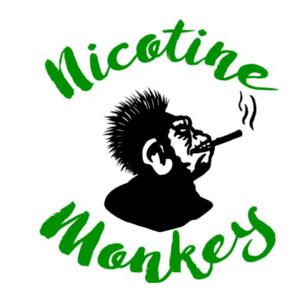 All right, Dr Symonds, what’s the evidence that your method works?
All right, Dr Symonds, what’s the evidence that your method works?
This hypothetical question, on the face of it, is not unreasonable.
The question is about whether there have been any scientific trials to compare my method with other ways to quit smoking. A trial could be done like this: you find two hundred smokers who say they want to quit and who are willing to take part. Half are treated with the standard care offered at stop smoking clinics, and the other half put themselves in my hands. After an interval of one year the numbers of smokers who have quit in the two groups are compared. Then it would be revealed that x per cent of smokers stop with the conventional approach and y per cent stop with The Symonds Method. This kind of trial, however, has not been done but I would welcome participation if anyone wishes to set one up.
The results of scientific trials that have been done of nicotine so-called replacement therapy show that only 15 to 20 per cent of smokers who accept this kind of help are not smoking one year later – an 80 per cent failure rate.
However, straightaway we have a difficulty. The period of one year is arbitrary. Suppose a smoker, having been abstinent for a year after finishing treatment with the X method, the next day decides to start smoking again. Does this mean the X method has failed?
There’s another problematical aspect of measuring the success rate of the Symonds Method: in theory it cannot fail. Now hold on, Dr Symonds, this is going a bit far! Actually, it isn’t.
I ask all patients who come to me for smoking cessation to give an undertaking that in the unlikely event they don’t happily stop after the first session, they will come back for another session (free of charge). In my experience, most smokers stop after one visit, a few come twice and in rare instances they come more than that. Therefore I could say that the definition of a success is a smoker who doesn’t come back. With all due modesty, the Symonds Method is not so much a method (this word is used merely for convenience) with a certain proportion of successes and failures, but an entirely new way of looking at smoking so that, once it is understood, in theory cannot fail.
There are many areas of medical practice where there isn’t much or any evidence to show which treatment is best, because proper trials have not been done. Yet because almost all the effort into trials of smoking cessation has gone into pharmacological (nicotine and drugs) treatments, this is the main type of evidence that exists at present and therefore, disappointing as the results are, nicotine products and drugs are what you are likely to be offered by conventional smoking cessation counsellors.
Another reason for this is that the medical profession has hijacked smoking cessation. Thus, we have the curious situation where smokers are offered medicinal nicotine to help them stop being addicted to the nicotine in cigarettes. Or they are offered prescription drugs which by design cause a chemical imbalance in the brain as a treatment for nicotine addiction. Or nicotine products and drugs.
If it sounds as if there’s something wrong with this approach, that’s because there is. For a start, there’s quite a bit of scientific evidence – largely ignored by doctors – that the best way to stop smoking is – just do it. Without nicotine or drugs. For example, there is a very interesting paper, The Global Research Neglect of Unassisted Smoking Cessation: Causes and Consequences, by Simon Chapman and Ross MacKenzie:
The main summary point is this:
Research shows that two-thirds to three-quarters of ex-smokers stop unaided. In contrast, the increasing medicalisation of smoking cessation implies that cessation need be pharmacologically or professionally mediated.
How difficult for doctors to change their habits!
I recently came across a good example of this in America – a country where they don’t do things by halves.
The highly esteemed Mayo Clinic has a Nicotine Dependence Residential Treatment Program, whereby for a mere $5,500 and eight days of your time they will attempt to cure you of smoking. They told me their success rate at one year is approximately 52 per cent.
The set-up seems similar to a health farm, except you have to submit to a breath test for carbon monoxide three times a day – to see if you’ve been cheating, I suppose.
The program is based on principles of addiction therapy and behavior change…You are assigned an individual counselor who is certified as a tobacco treatment specialist. An internal medicine doctor oversees your care…the clinical treatment you receive addresses your individual needs and best prepares you for life after the program.
That’s the point: what about life after the program? The 52 per cent abstinence rate at one year is better than the usual results of smoking cessation treatment but it’s not exactly brilliant.
If you’re a smoker, it doesn’t matter how you quit as long as you it, and obviously the sooner the better. You might go for something less intensive than the Mayo Clinic Residential Program such as the American Cancer Society Great American Smokeout, which aims to encourage smokers plan to quit on the third Thursday of November each year. They tell you quitting is hard, there’s the subtle emphasis on fear with the association of smoking and cancer, and the treatments given prominence are nicotine and drugs.
Isn’t it about time doctors and smoking cessation counsellors looked into nicotine- and drug-free smoking cessation? After you’ve smoked the last cigarette, if want to quit, you don’t smoke another one. Ever. That’s it. Easy – provided you understand what’s going on and have the right kind of support.
The best way to become a non-smoker again if you have difficulty doing it on your own, is through the Symonds Method private sessions.
Text © Gabriel Symonds

Leave A Comment